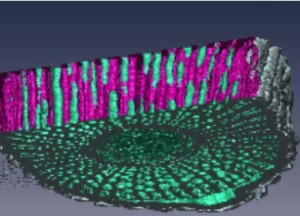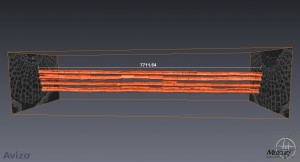The structure of the xylem may be represented by a complex network of interconnected conduits that move water from the roots to the leaf surface. Because water is transported through the xylem under tension (negative pressure), it is subject to cavitation and embolism, which results in reduced capacity to transport water. The xylem is also the target of many bacterial and fungal pathogens, the movement of which is not understood but essential for pathogenicity. The structure of the xylem is widely considered to be a compromise between the efficiency of water transport and safety from pathogens or dysfunction via embolism.
Regardless of the environmental pressures that have contributed to the existing solutions to the efficiency/safety tradeoff, almost no studies have incorporated information about the three-dimensional structure of the xylem and its effect on xylem function. In fact, understanding of the three dimensional network design is limited to interpretations from a few sets of serial sections of plant stems. High Resolution Computed Tomography (HRCT) can produce images of the internal structure at 1 or 2 μm resolution. Therefore, we used HRCT to examine the function of the xylem conduit network in terms of potential tradeoffs in hydraulic efficiency and spread of pathogens and embolism. We used grapevine (Vitis spp.) as a model system to examine the influence of xylem structure on the ability of pathogens to move through the network. Images, such as those shown below, were used to reconstruct the three-dimensional arrangement of vessels and their interconnections. The reconstructions of the vessel network were then used to mathematically model the 3D arrangement of the hydraulic network, its conductivity, and water transport through the network and through the pit membrane connections.


